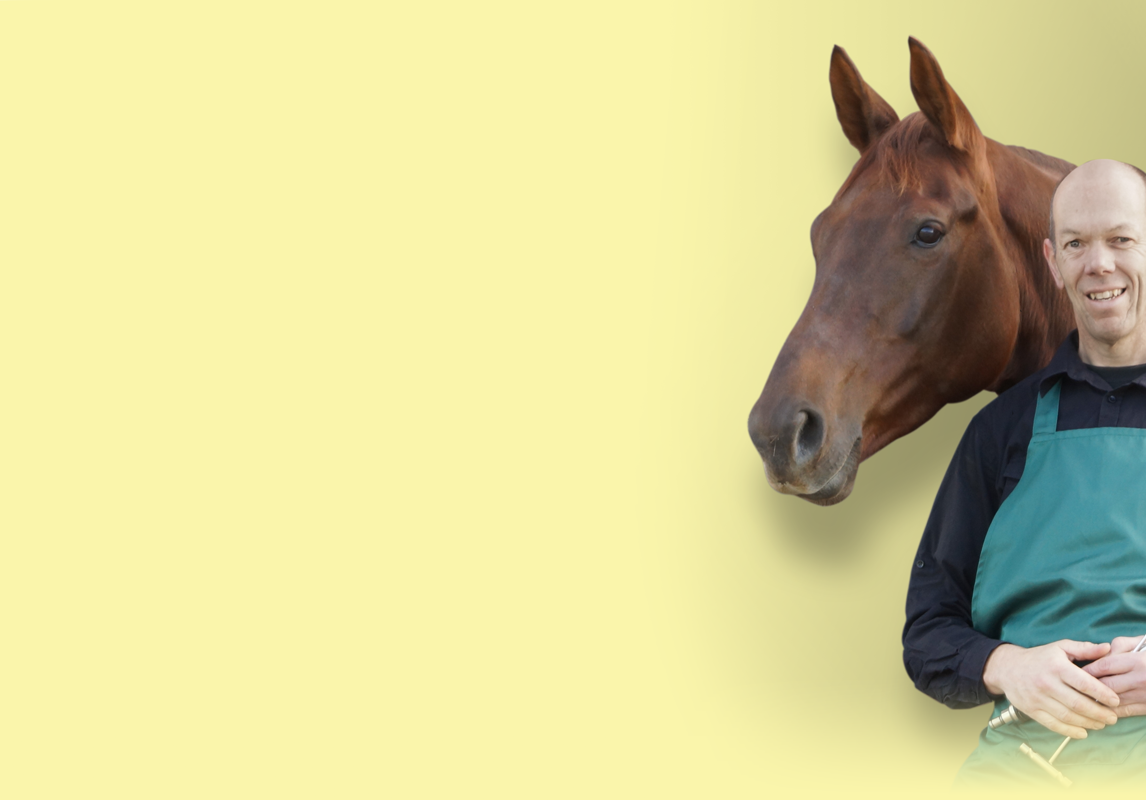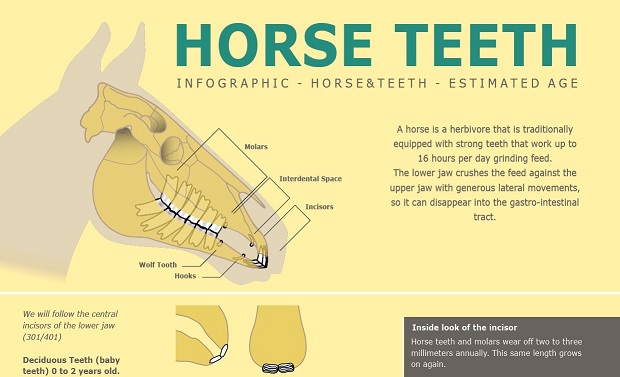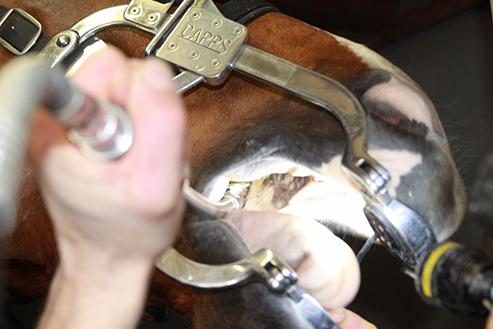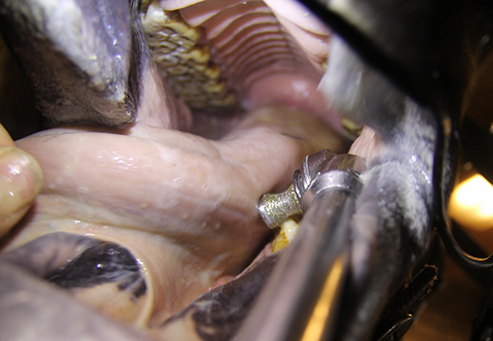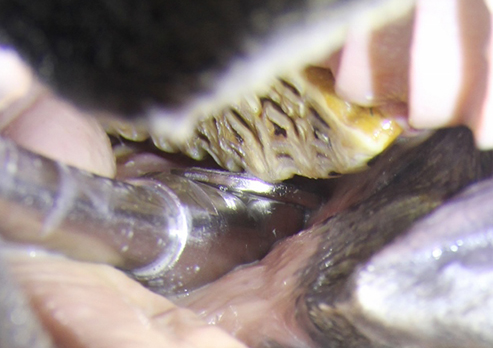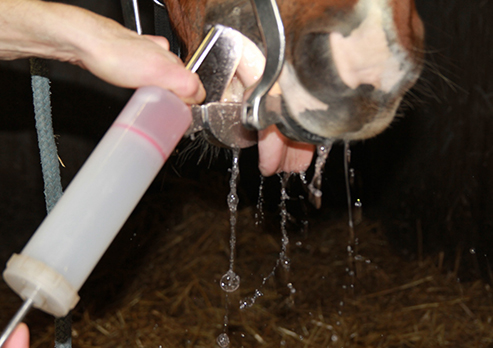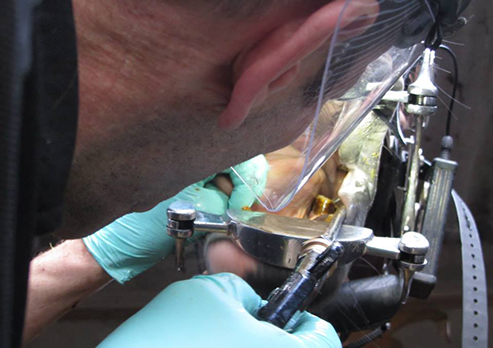Enamel points originate from the shape of the molars, and emerge in the upper jaw on the cheek side [buccal], and on the lower jaw on the tongue side. [lingual]. Depending on the wave pattern of the so-called singulae, and the presence of the amount of cement, can cause more or less trouble. In performance horses cheek lesions occur often as a result of the tack that is being used, especially the noseband and teeth shape create the problem.
Month: September 2015
Overbite (parrot mouth / brachygnathism) or underbite (monkey mouth / prognathism) is fairly well known and common in miniature horses and Shetland ponies, with this condition, they are often excluded from being registered in the pedigrees
Incisors can get several different disorders in which hooks on the last elements 03 is most common. You will see the name échancrure or “dove tail” regularly, even on my dental chart. We seek to replace these names in the future.
We come across persistent deciduous incisors often. Persistent teeth are teeth that are loose, but will not come out. If they are loose, it is recommended to remove them as soon as possible. At a young age, the final incisors can then, still migrate to their proper position causing diastema to still close in time, and avoid any problems. Caps are the remains of the deciduous teeth. Most horses will lose these caps without human intervention. However, it may be possible that a cap becomes lose and will cause trouble. This can lead to a horse refusing to eat or showing clear signs of pain. Often these patients can easily be assisted with a simple dental treatment.
The elements of the teeth require a complete book, explain about evolution, its working and care. Therefore its unexplainable in a few sentences. Hereby an explanation about the location of the elements. Additional issues about teeth can be found in my blog.
Incisors
Incisors l01-I03. These teeth are found on the front side, behind the horses’ lip. The incisors come in as baby teeth in the mouth, and later on, they are supplanted by the permanent incisors. A horse has 6 incisors in the lower jaw and 6 incisors in the upper jaw.
Hooks
Behind the incisors we will find hooks in the horse’s mouth. Usually these teeth come through around the age 4,5-5. They are placed a few centimeters behind the last tooth, in which the cutting elements in the upper jaw are usually positioned a little behind the lower hook teeth. In about 5% of the mares we find hooks.
Interdental Space
Then comes the interdental space, where we choose the place the bit in its mouth. This space is for the rider extremely important, but often underestimated in the terms of sensitivity. The skin over the lower jaw is thin, and if reckless, it can be damaged easily. Injury makes it impossible to give the horse the correct training. Therefore, caution is advised.
Molars
Next you will come across the molars. You will find wolf teeth in about 20-30% of all horses. This small element is a left over from the horse’s evolution. Horses used to have a bigger row of molars when the horse had to masticate much more rough feed like branches and leaves. Meanwhile, the row of molars of today’s horse is composed of six elements in which the first 3 elements, like the pre-molars appear in the mouth and are exchanged between the ages of 2,5-4 years old for the permanent molars. Sometimes we find horses with an element too many, Hyperdontia. Even too few elements is possible, here we speak of Hypodontia.
Check-up
The horse’s will be checked externally, meanwhile I will ask the owner the history of the horse and possible issues. Next, I will rinse the mouth profusely, and check the inside. A special streamlight (headlamp) is used to give plentiful light to give a proper diagnoses. Furthermore, all the teeth will be checked by hand to see if there are any loose teeth.
Capturing Data
After a check-up, a digital dental chart (Pimbury Dental App) always follow for accurate records and for a future checkup. We always put some digital pictures of the mouth in the dental charts.
Treatment
Electric dental tools are used to give the best results. To give the most efficient dental care, it’s always necessary to sedate the horse. This is done by my colleage, a vet how’s always with me on site. No other qualified person may use this method.
As soon as the dental treatment is finished, additional advice will be given. Afterwards, your loyal four-legged animal can continue with his greatest hobby; Eating!!
We want an optimal comfort in the horse’s mouth to eat and when riding. This applies to every horse, whether it’s a champion or a friendly companion. For myself and my clients, I strive for the best quality of service. I work with electric dentures to reach this kind of quality. A treatment with electric dentures is much more precise, efficient, and it reduces the risk of damaging soft tissue.
I want to convince you, hands on the usefulness of this chosen method. If there are any questions, or would you like to make an appointment, feel free to send an e-mail or give me a call.
